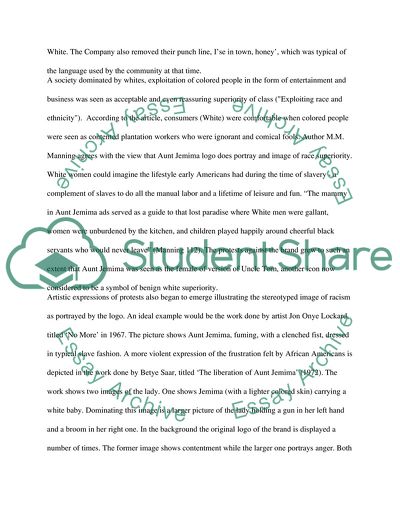Retrieved from https://studentshare.org/marketing/1578545-aunt-jemima-stereotypical-images-in-popular-culture-see-httpwebwmeduamst3702005fsp6homehtm
https://studentshare.org/marketing/1578545-aunt-jemima-stereotypical-images-in-popular-culture-see-httpwebwmeduamst3702005fsp6homehtm.


